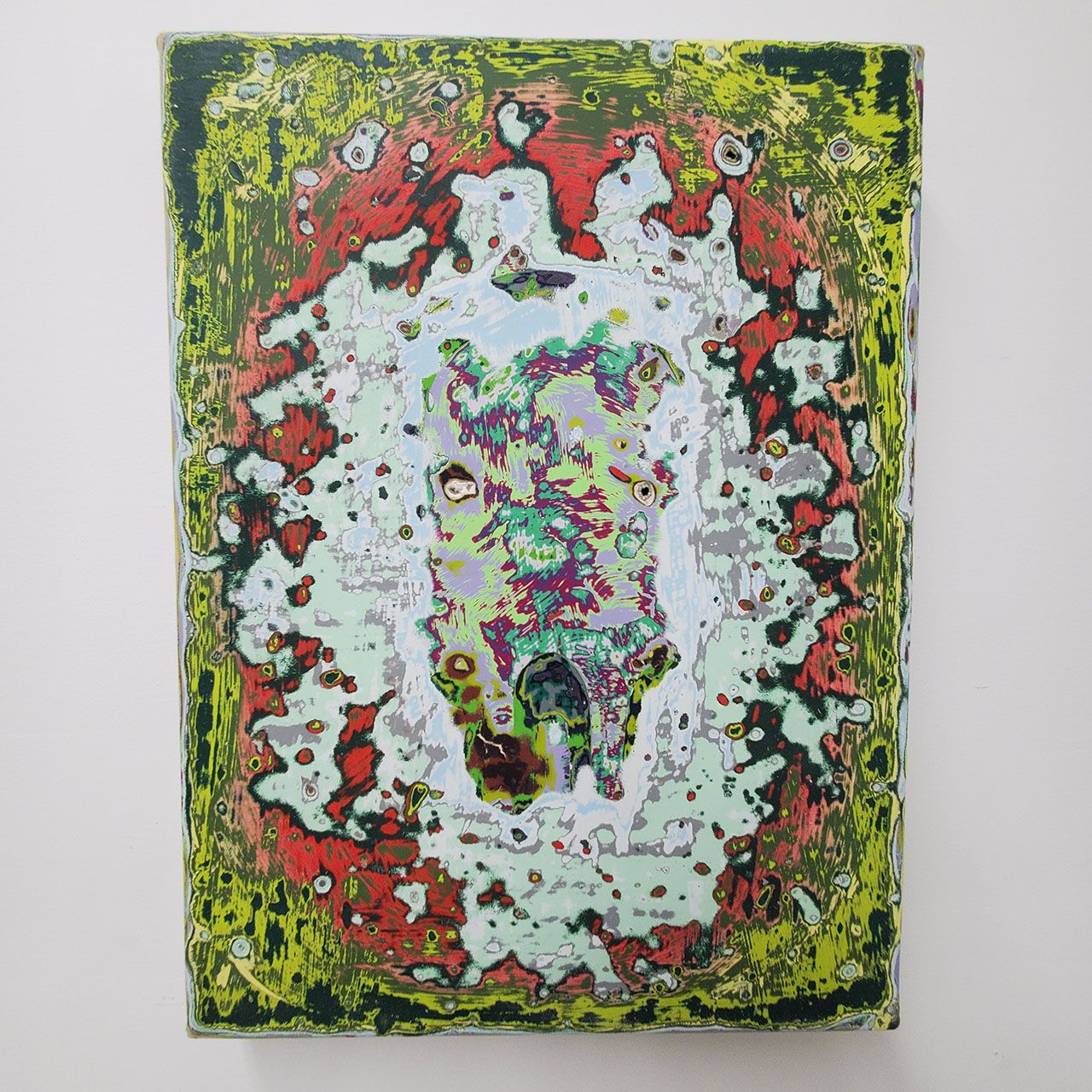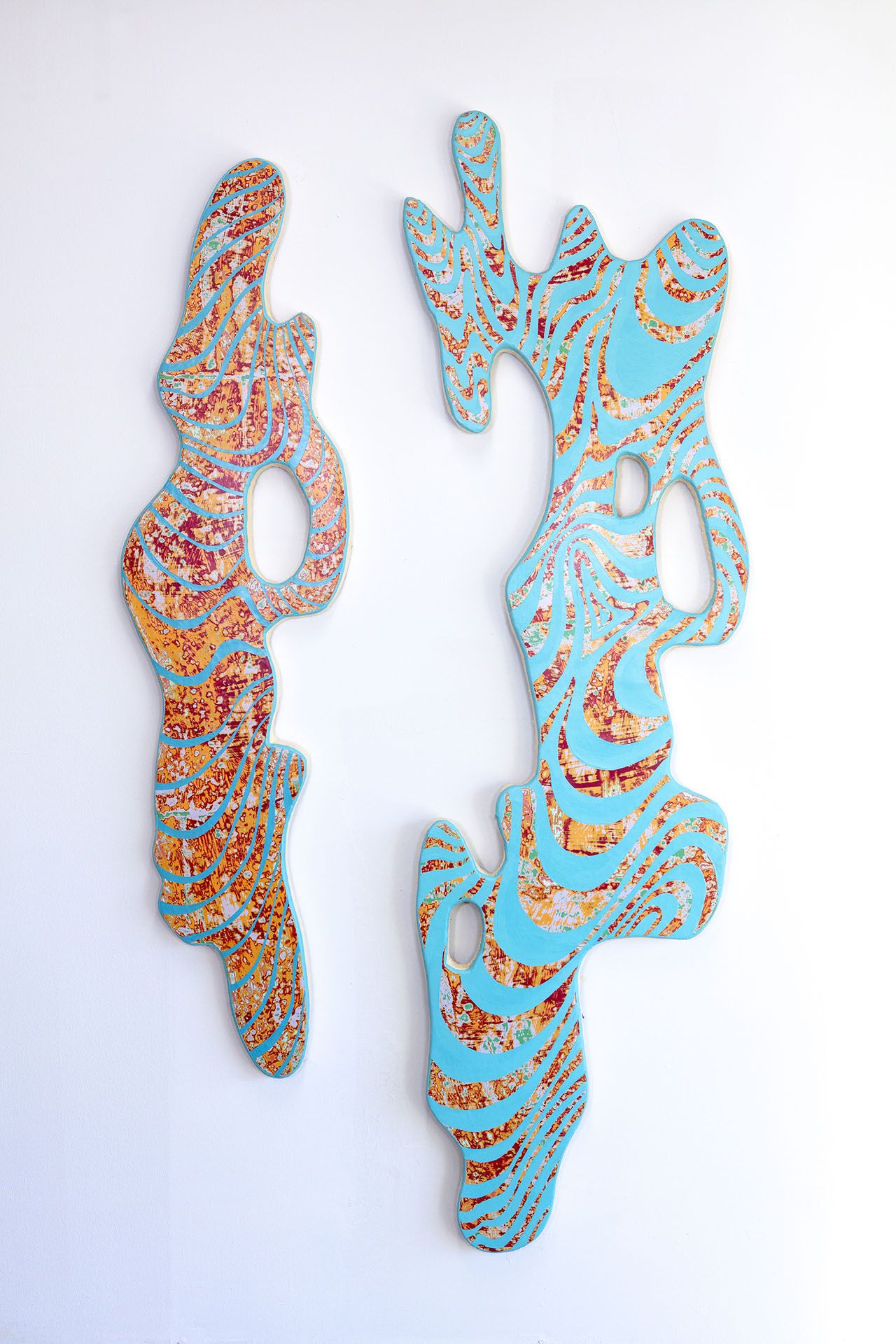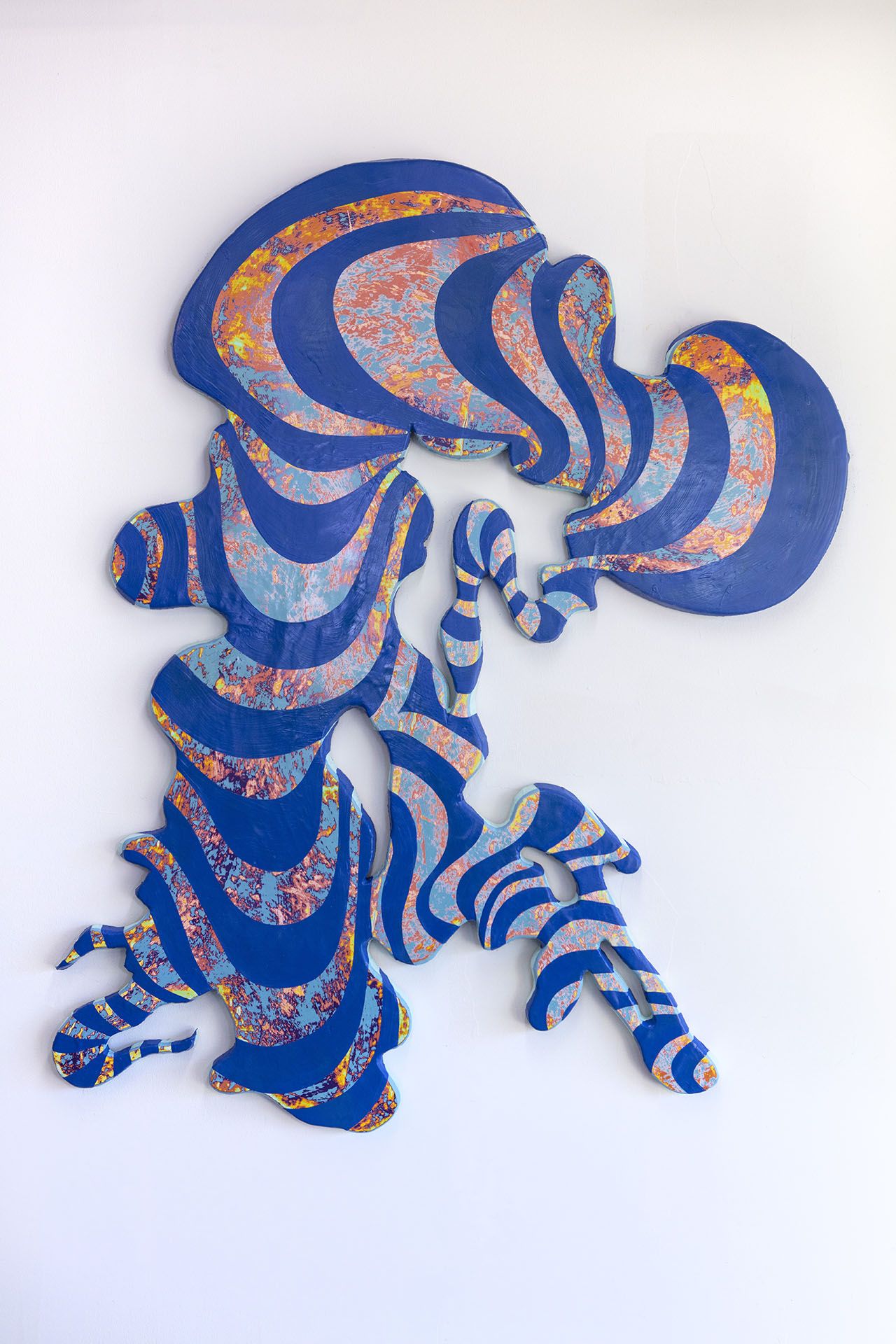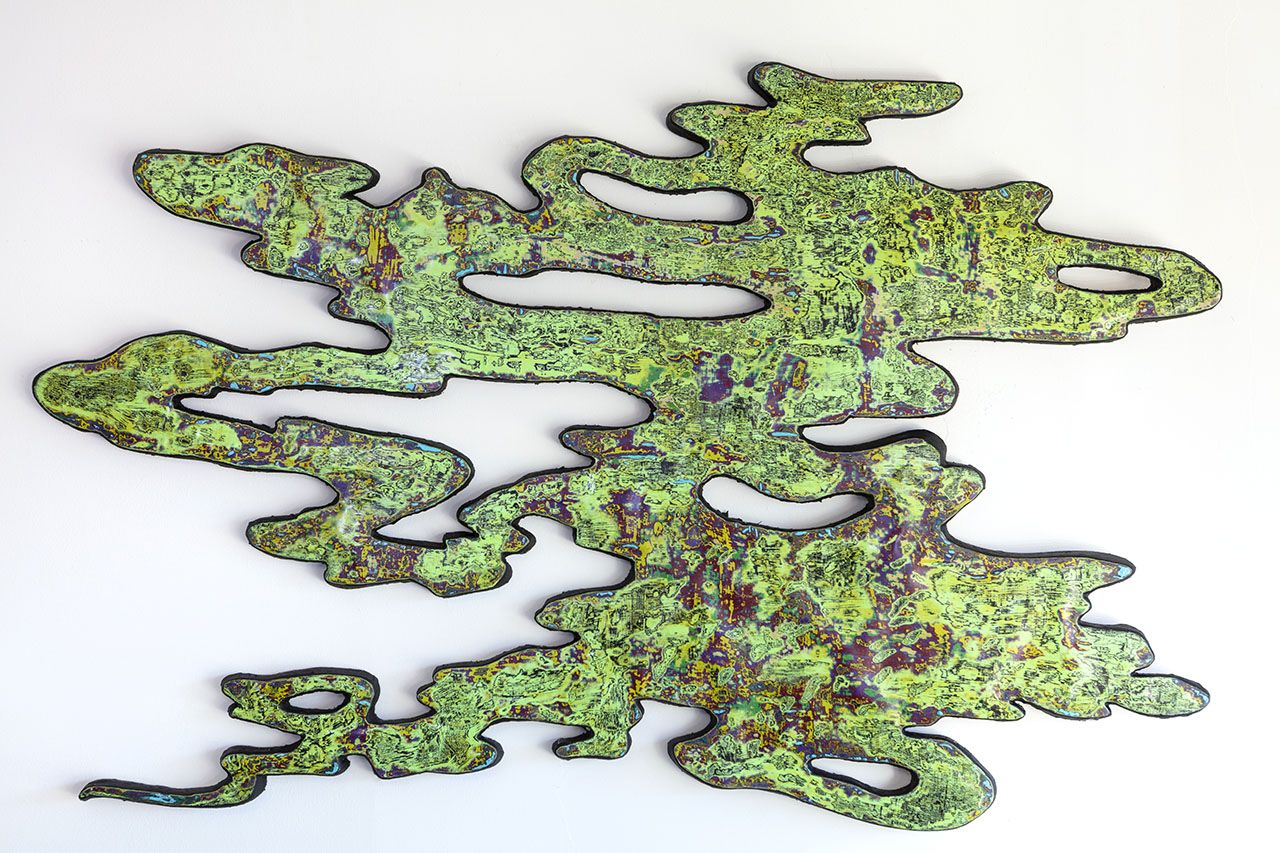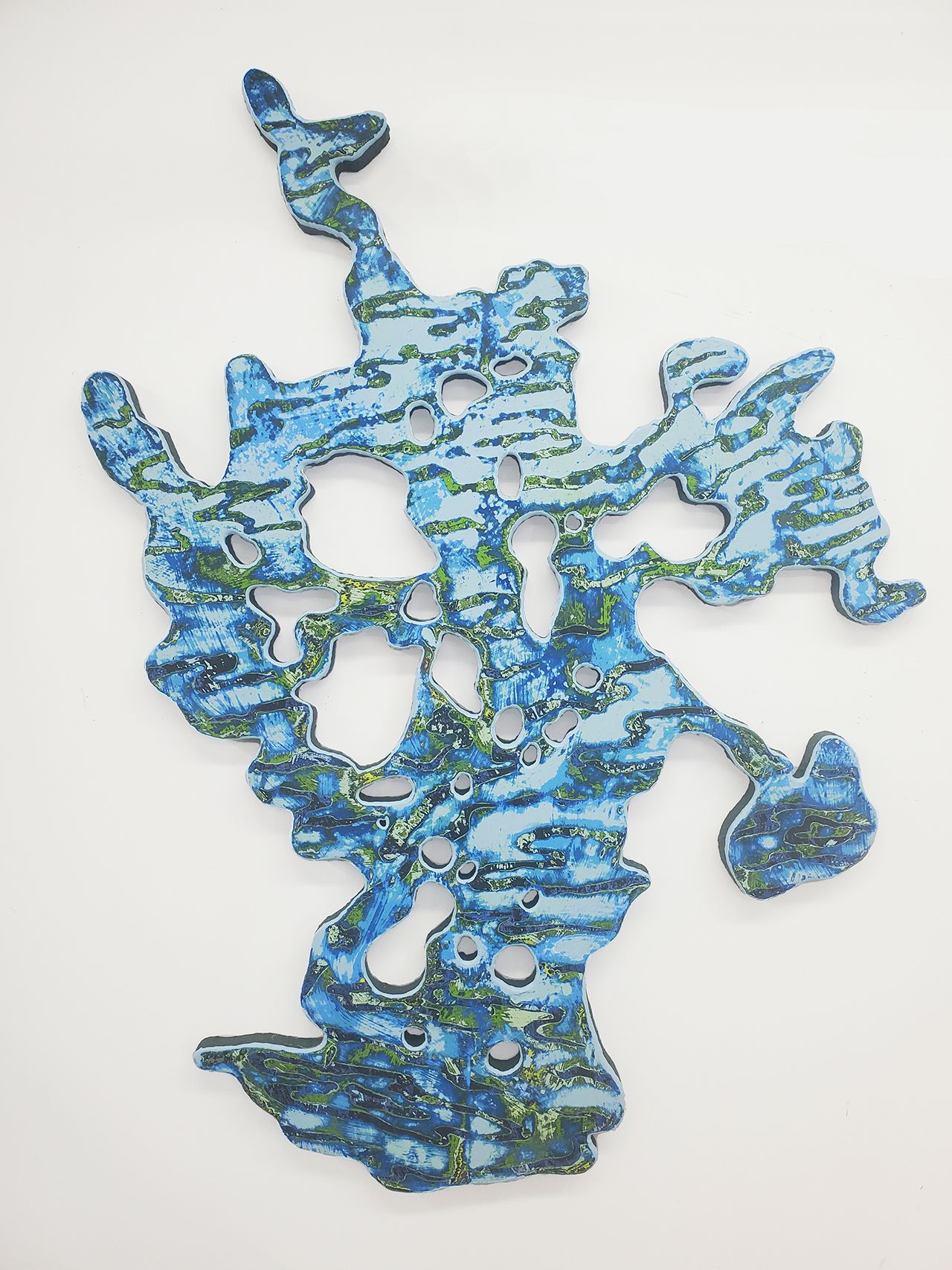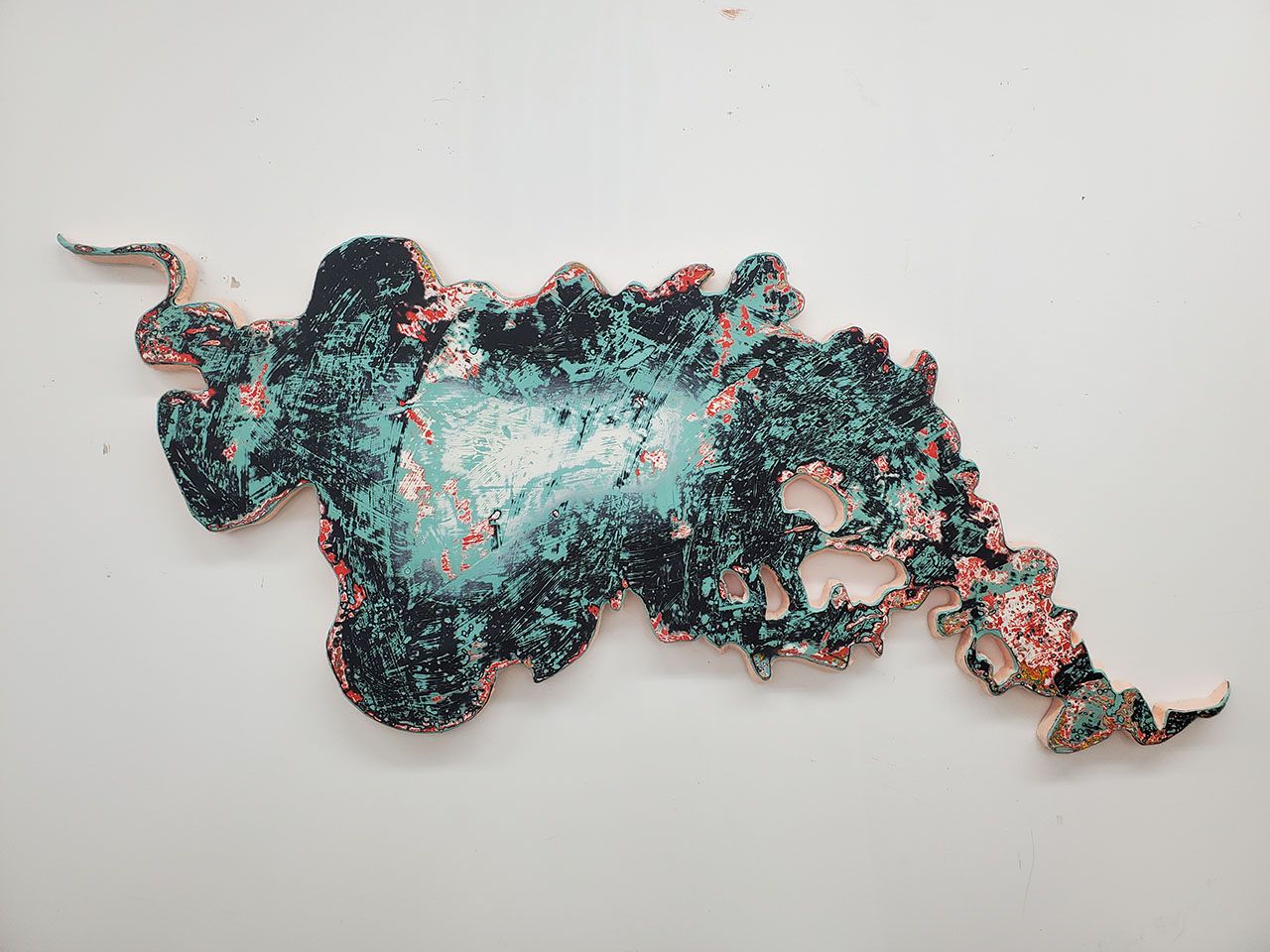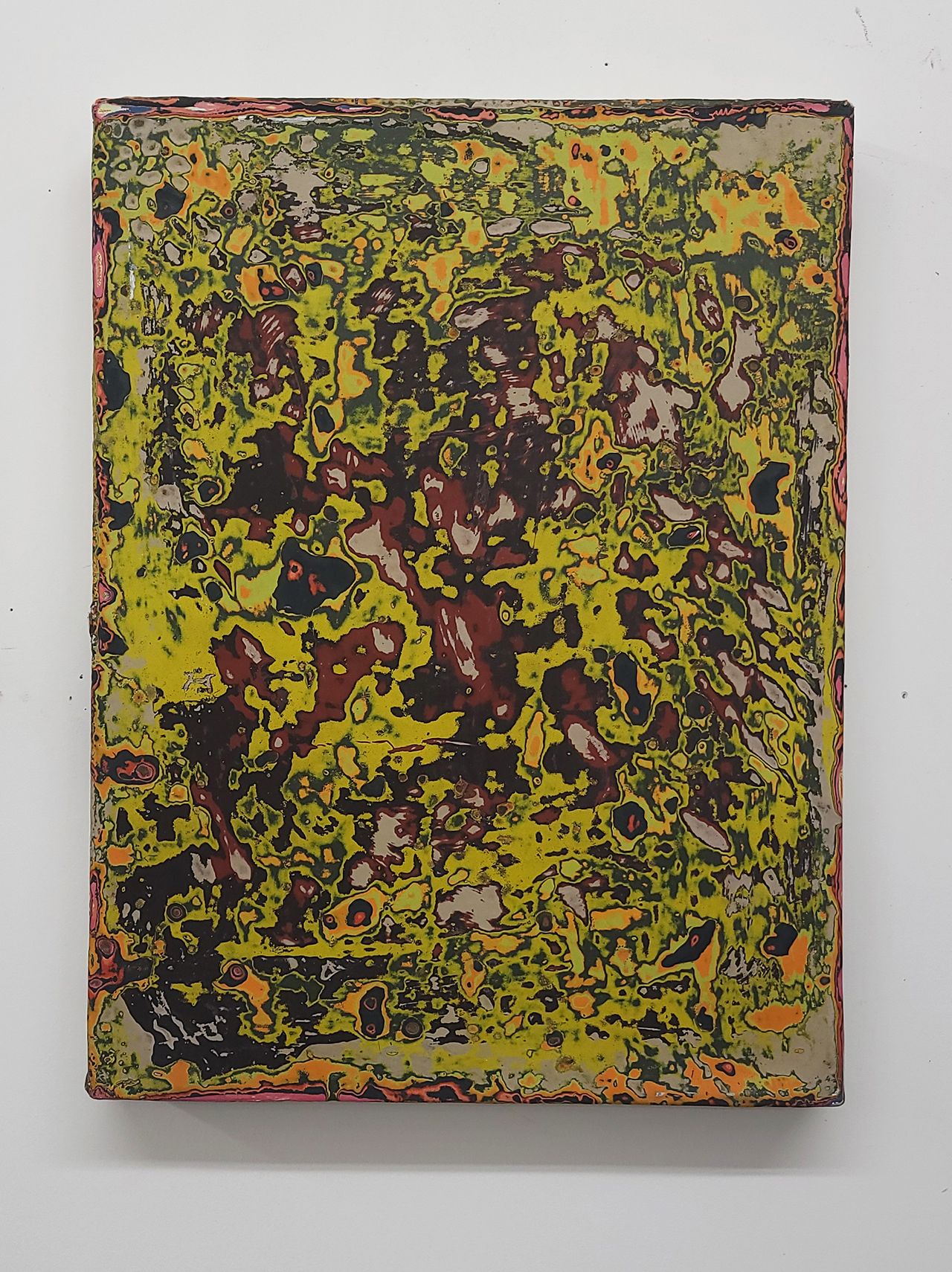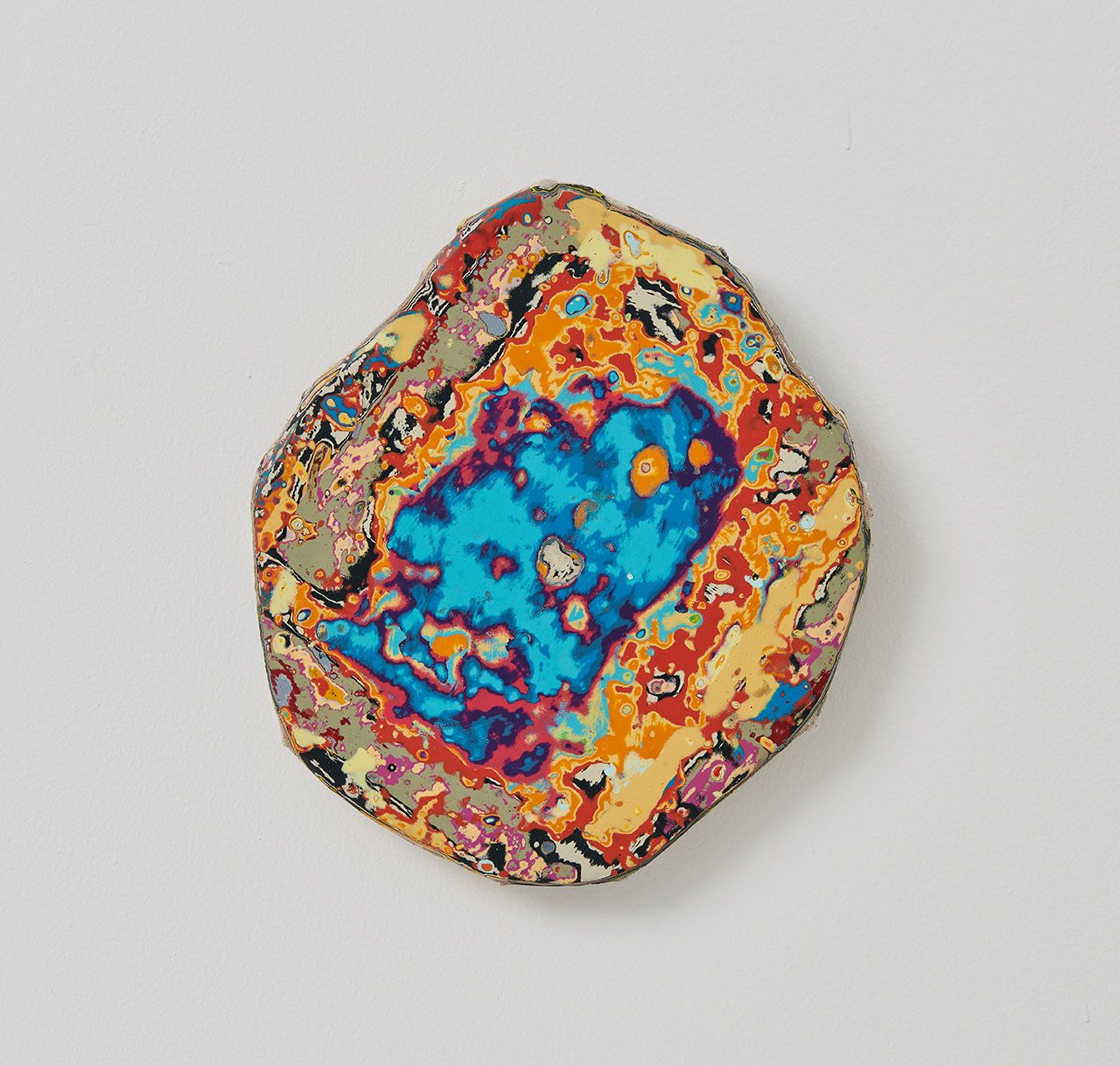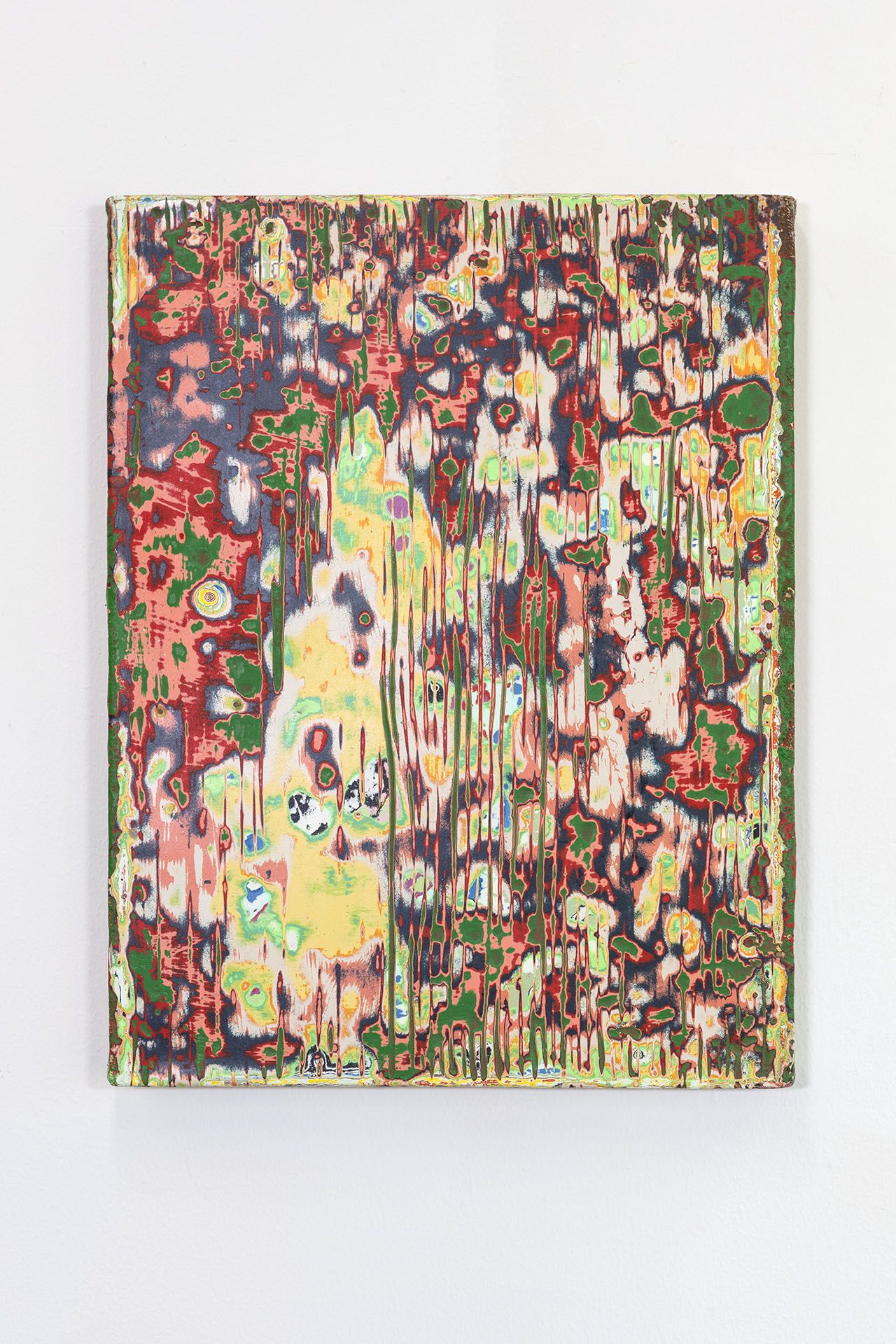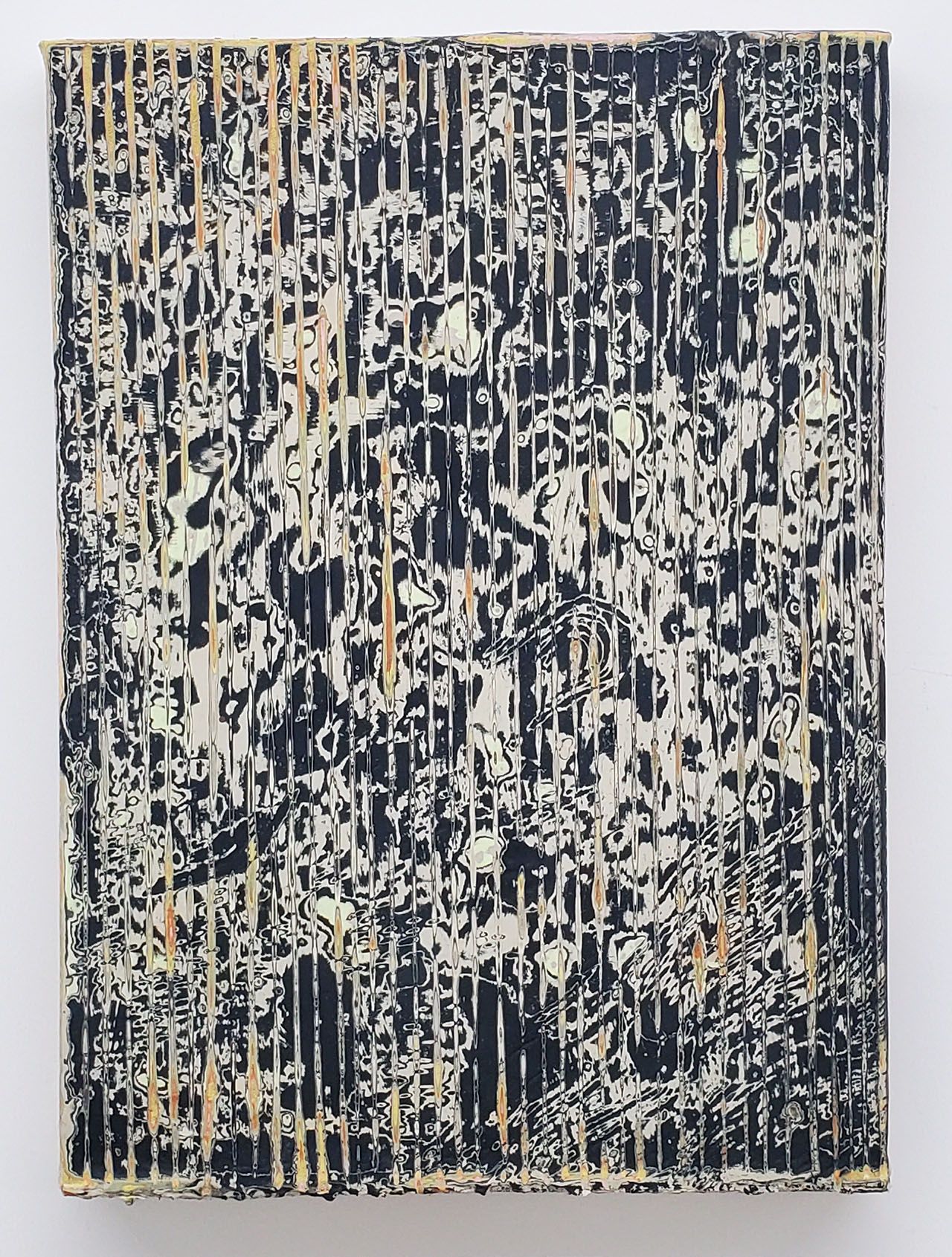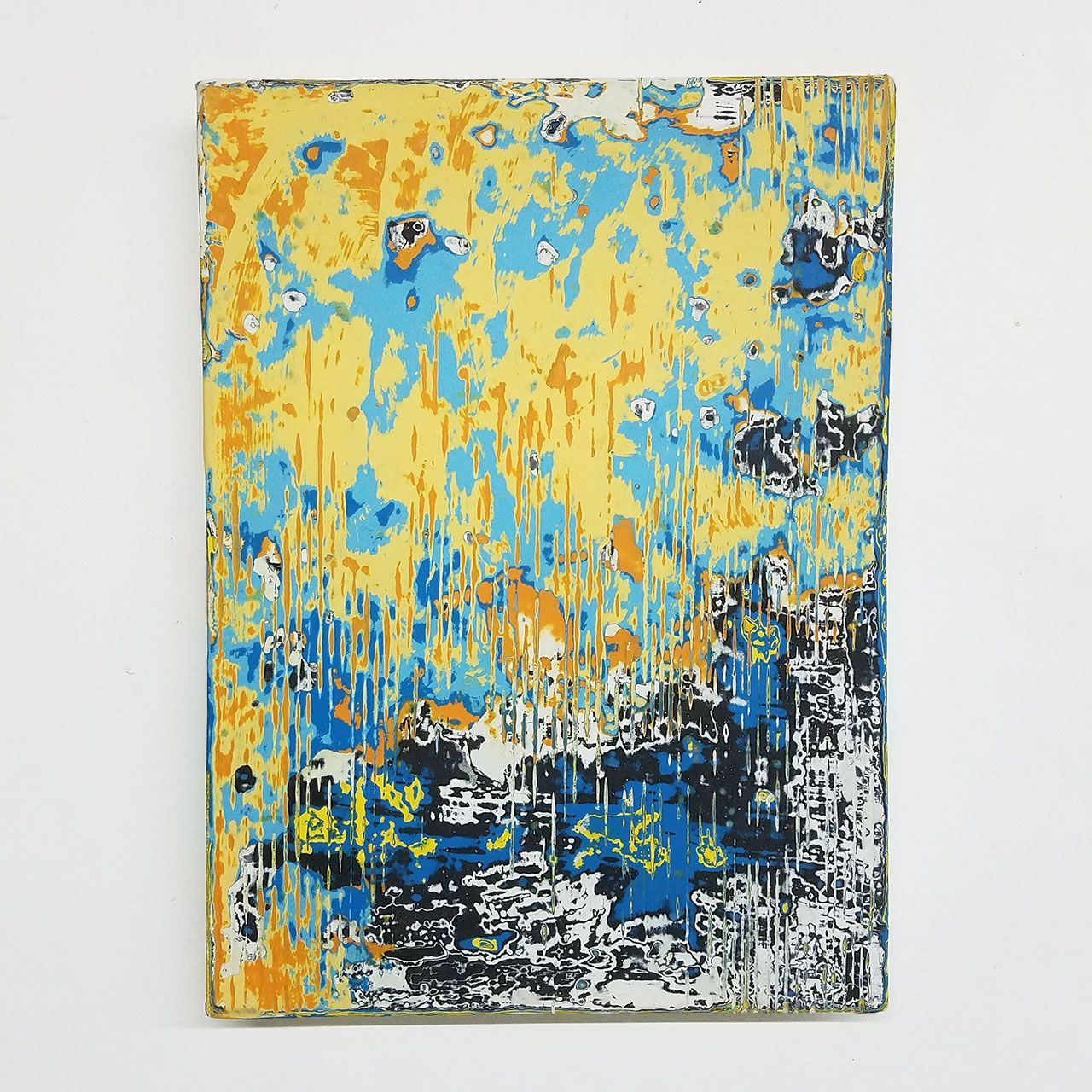Residents
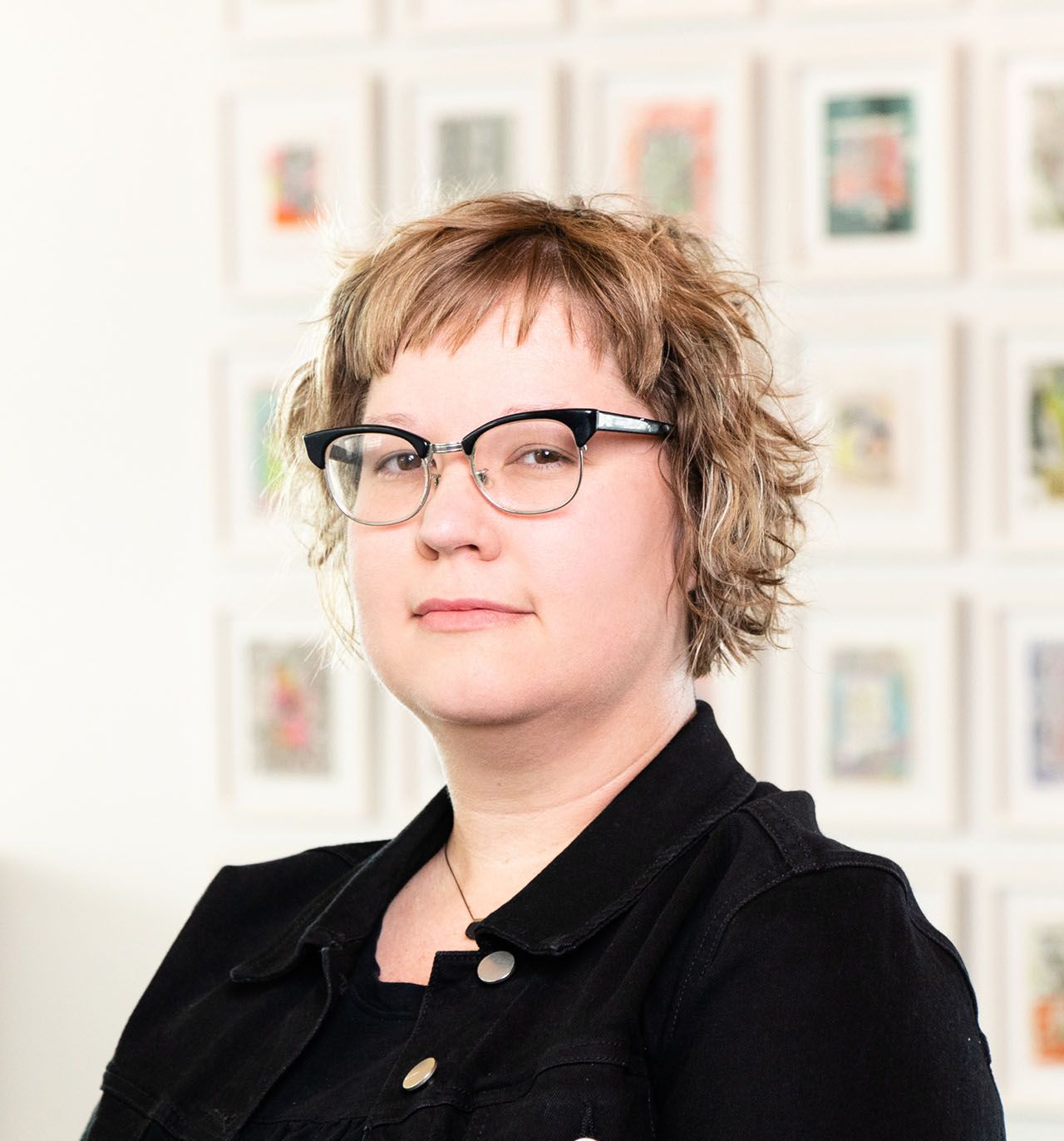
Kate Mulholland
b. 1987
Youngstown, Ohio, USA.
Kate Mulholland currently lives and works in Houston, Texas. She attended the Art Academy of Cincinnati and graduated with a BFA from the University of Houston while studying Geosciences. Her work has been featured in numerous exhibitions across Texas and curatorial projects with artists Robert Hodge and Mark Flood. Mulholland was featured in the 2019 issue #144 of New American Painting, resides within the permanent collection of Houston Endowment, and has work in private and corporate collections nationwide.
Painting (2014- present day)
My fascination with the mechanics of nature and the environment began very early. I grew up hunting fossils, arrowheads, and natural clays on the coastline of Lake Erie. Today, I combine various methods of making and recycling in the studio to mimic Earth’s physical processes.
Geology is a visual language as much as a historical mapping and decoding of Earth. It’s a language that can be an allegory to how our minds and identities work and an entry point into understanding larger conversations today.
I begin a painting by adding layer by layer an accumulation of paint. Over time, these accumulations are eroded, just like how sand or soil is made beneath our feet. Like memories, multiple layers and erosion events pile on each other to create an image composite of visual time. This method of terrain-making, or painting, is the vein that runs through all of my work.
Paper Agates (paper artwork, 2020- present day)
Paper Agates are the paper component of my art practice. The name comes from an agate’s banded structure, successive layers within the confines of a sample. Although there are many appearances and forms of agate, all of them are slowly formed by accumulation processes that mark time.
The Agates are composites of the cityscape and the community I live in. Man-made paper materials are combined and eroded to reveal texts, textures, and images. In the same way, I build new terrains with painting; I reconstruct and recontextualize existing earth-building processes with materials found in the world. Over time, these pieces become community portraits, capturing time, memory, and culture in a visual capsule.
These works incorporate bills, fliers, magazines, manuals, letters, lists, packaging, pamphlets, signage, photographs, discarded paper stock, and letterhead from museums, small businesses, and corporations.

